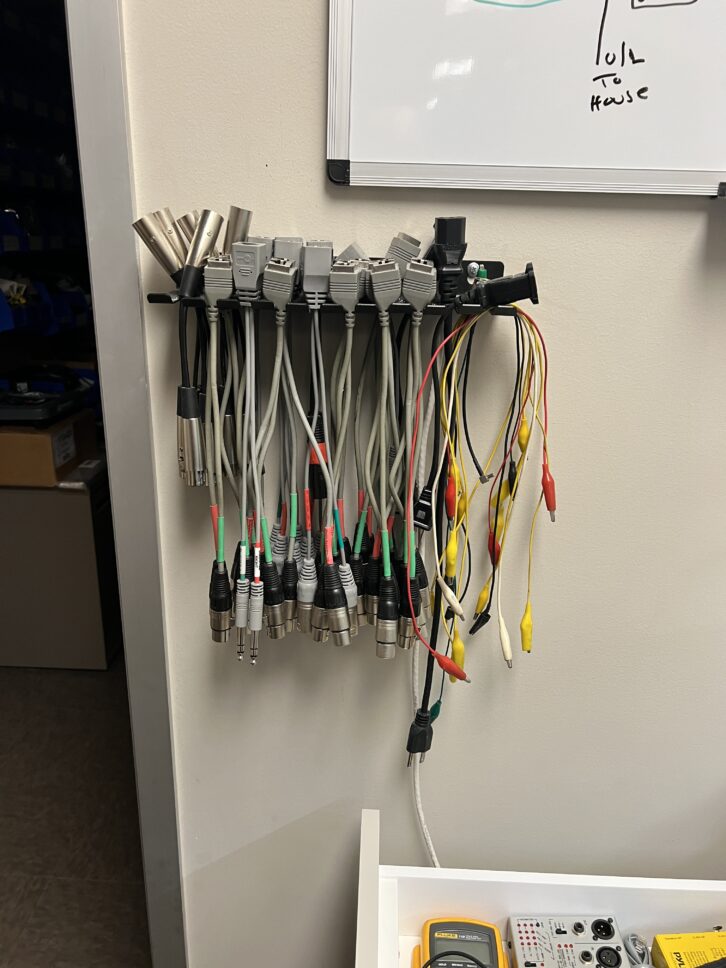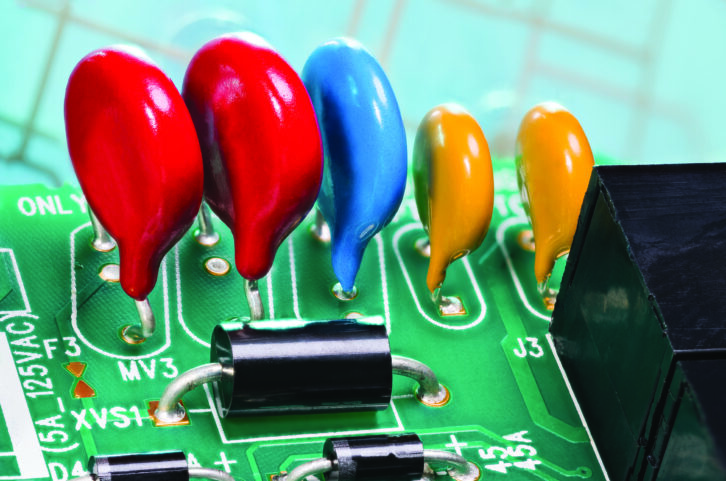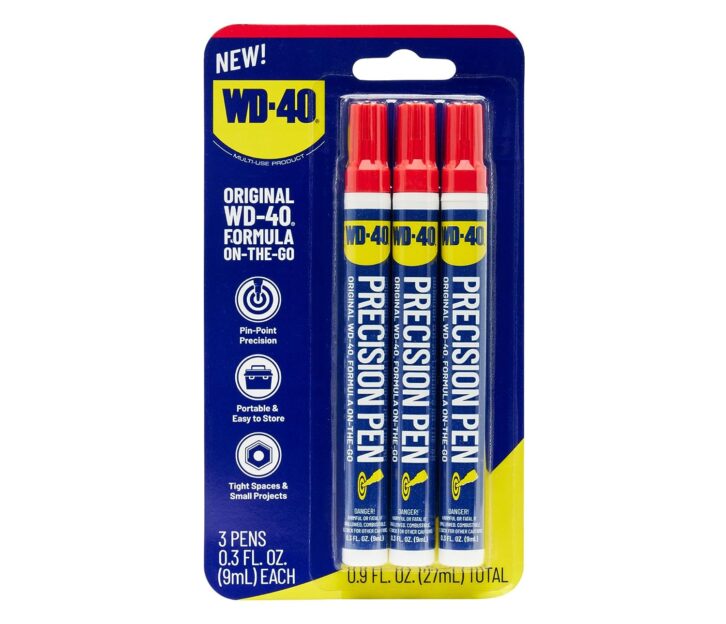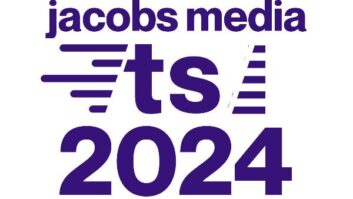In August I asked you to name your favorite “gear gone by.” Systems integrator Edwin Bukont of E2 Technical Services & Solutions took us up on that. While assisting with an Axia AoIP conversion for Salem Media Seattle, Ed spied something old that was new again.
You may have used a wall-mounted patch cord “comb” like the one shown in the first photo to hold your patch cords in days of yore. Well, Salem Chief Engineer Dave Ratener repurposed this comb to hold StudioHub cable dongles.
Most stations no longer use patch cords, but many use the StudioHub adapters, now provided by Angry Audio. Rather than storing the various configurations in a jumble in a box, why not hang them on a patch cord comb, to make identification and selection easier? Smart!

MX-5050s still in use
Anthony “Kernz” Garza at KRFE(AM) in Lubbock, Texas, was pleased to see our photo of Al Peterson holding Chris Courson’s Otari MX-5050 reel-to-reel machine.
The first thing Kernz noticed were the razor blade marks on the front. Obviously this machine had been used over the years for speed editing!
Kernz owns three of the MX-5050 models and an MX-5 in a rolling rack. He considers the line the “cream of the crop” — until a serious problem develops. Seems some of the transport buttons were designed “upside down,” allowing liquefied switch lubrication eventually to find its way, via gravity, to the switch contacts.
However, a real plus to the overall design is there are NO belts in the machine.
Kernz’ machines find weekly use for himself, the station and some clients who have no way of listening to an audio tape.
One of his favorite memories is of an octogenarian who was able to hear her father’s voice again after many years. She cried as Kernz dubbed the audio to be sent via email to her family. (Talk about providing a public service!)
The radio station has many reels that are unmarked; some are ancient. Kernz even found a few voicings by Buddy Holly when he and his best friend Bob Montgomery played live over KDAV (now KRFE) for a Sunday bop program.
Yep, Kernz concludes, the MX-5050 was and is a great machine to have around.
Welton warns about MOVs
While chatting with Nautel’s Jeff Welton at the Texas Association of Broadcasters conference last month, he mentioned that he’d seen Fred Baumgartner’s Workbench submission on protecting analog phone lines.
Jeff pointed out that sometimes metal oxide varistors are used instead of neon bulbs. But Jeff cautioned that if you do opt for MOVs, be sure to put fuses in series with each one.
The reasoning is that 100% of the time, MOVs fail in a “short-circuit” mode. If not fused, they will fail in an open circuit mode, where they may completely vaporize! Neon bulbs are not an issue, they simply light brighter as the surge voltage increases. Jeff add that in a serious overvoltage condition, like a nearby or direct strike, the line into the demarc point probably exploded anyway!

WD-40 now in a pen
We all have used legendary WD-40 as a padlock lubricant or to loosen rusted parts. My experience is mostly with the aerosol can form, which is fine if you don’t mind spray on adjacent parts. But even the flexible straw aerosol version can cause some overspray.
Listening to its customers, the folks at the company now offer the pinpoint accuracy of a porous chisel-tip so you can apply the product exactly where it’s needed. The WD-40 Precision Pen delivers that original WD-40 formula in a compact pocket-sized design.
Shown in the accompanying photo, a package of three pens costs less than $15 on Amazon.

Critters and nests
It goes without saying that most engineers have discovered nests of some kind in their travels, as we described in July.
Rhode Island Systems Engineer Ihor Slabicky tells of a summer cottage that had not been used in years. Ihor’s task was to ready the cottage for residency. This included removing a “mouse house” from a bedroom dresser drawer. The mice had carried the stuffing from the mattress into the drawers. Talk about a mess — but probably cozy for the mice!
Give us access to those great brain cells of yours. Send your Workbench tips (which qualify for SBE recertification credit) to [email protected].












